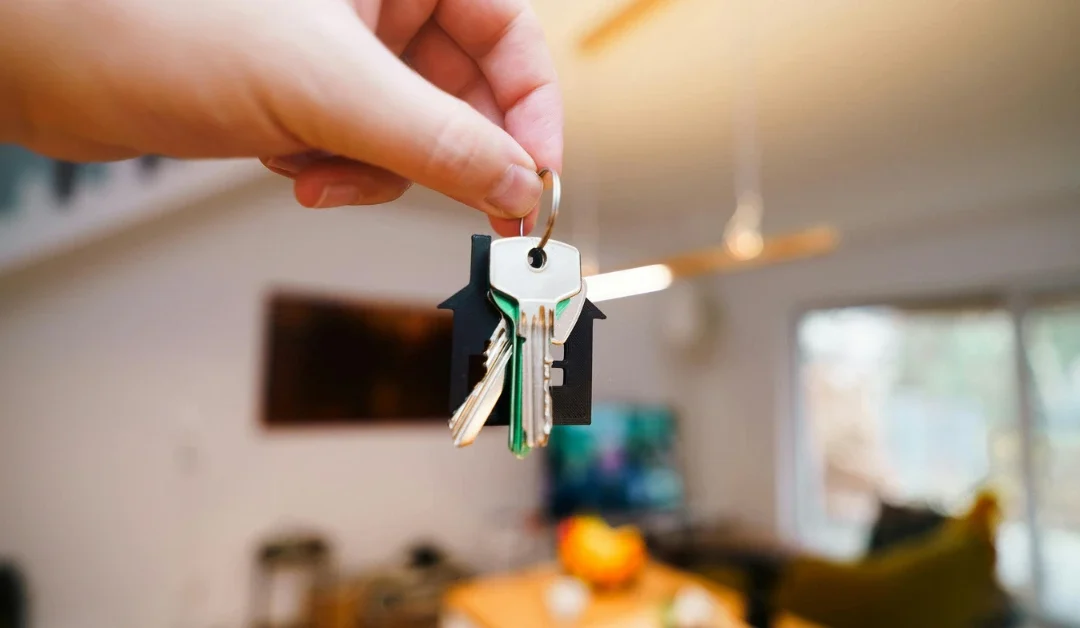What rental property investment strategy can you use to build passive income and long-term wealth?
I used one simple strategy to build a seven-figure rental business.
And today, I’ll share how you can…
- Figure out what strategy to use (to maximize your profits and minimize risks)
- Find your first property (and finance it)
- Manage your property (without working 24/7)
Want to learn more? Read on!
The 7 best rental property investment strategies for beginners are:
- Buy-and-hold strategy
- House hacking
- Short-term rentals
- BRRRR method (buy, rehab, rent, refinance, repeat)
- Fix-and-flip
- REIT (Real Estate Investment Trust)
- Wholesaling
Key takeaways:
- The best rental property strategies for beginners are house hacking and renting by the room. I’ll share how you can use them below!
- Smart property selection matters more than timing. Learn why successful investors use specific strategies that yield high rental income.
- Most new real estate investors focus on the wrong metrics. This article will show you which overlooked factors determine long-term profitability.
7 rental property investment strategies for beginners
Here are the top rental property investment strategies that work well for complete beginners. Many are low-risk strategies that can help you achieve financial freedom.
I’ve used some of them myself – and in this quick video, I share more:
First, let’s start with the buy-and-hold strategy.
Buy-and-hold strategy
The buy-and-hold strategy is a proven way to build long-term wealth in real estate. It involves buying a property and holding it for years, or even decades. The goal is to benefit from appreciation and steady rental income.
This strategy is versatile and works well with different property types, including:
- Single-family homes: 35% of all rental properties in the US are single family homes. These properties have one or more bedrooms, bathrooms, and living areas. They need little upfront cash and are usually easy to manage. But, they involve more risk as you rent to one tenant.
- Multi-family units: Properties with attached homes. They offer multiple income streams and lower vacancy risks. Depending on whether you live in your property yourself, you might not need to put a lot of money down upfront.
- Commercial real estate: Higher returns but with more upfront costs and management demands.
Benefits:
- Appreciation: Property values typically increase over time, boosting your ROI.
- Consistent cash flow: Steady rental income helps cover expenses and builds passive income.
- Flexibility: This strategy works with many property types and markets.
Challenges:
- Vacancy risk: Empty periods can reduce your income.
- Market fluctuations: Property values may decline in some situations.
My favorite buy-and-hold strategy
One of the most lucrative approaches I’ve found is student rentals. Instead of renting the whole house to one person, you can rent each bedroom separately. This works great for students and traveling healthcare professionals.
Here’s why I love it:
- Higher profits: Renting by the room often generates significantly more income. For instance, I own 14 student rental properties. They earn me $2,000–$3,500 a month after expenses.
- Consistent demand: Students and healthcare workers create a reliable tenant pool.
- Lower risk: Renting multiple rooms reduces the financial impact of a vacant unit.
Here’s what this means with a simple example:
If you own just four houses and rent them to students, you can make $2,500 from each house every month. That adds up to $120,000 a year–not bad for a few houses!
I talk more about student housing rentals here and in this quick video:
House hacking
House hacking is a smart strategy where you live in one part of your property—like a room or unit—and rent out the others. If done right, your rental income can cover your mortgage, letting you live virtually for free.
This approach works for both multi-family and single-family homes with multiple rentable rooms.
It works particularly well with:
- Multi-family homes: Rent out additional units while living in one.
- Single-family properties: Rent individual rooms to maximize income.
I’ve personally used house hacking to build my real estate portfolio, which you can learn more about here:
Benefits:
- Free housing: Rental income can fully cover your mortgage payments.
- Reinvestment opportunities: Extra income can fund the purchase of additional properties.
- Accelerated mortgage payoff: Use rental income to pay off your property faster.
Challenges:
- Living with tenants: Sharing your space may require extra patience and boundaries.
- Higher upfront costs: Purchasing multi-unit or larger properties often requires more capital.
Short-term rentals
Short-term rentals are houses you rent out for short stays, like on Airbnb. You can make good money this way, but there are some problems to think about:
- Some months are busier than others
- Cities have special rules you must follow
- You depend on websites like Airbnb to find guests
Benefits:
- High profits: You can earn a lot if you manage the rental yourself or hire someone to do it without spending too much.
- Appreciation: Over time, your house can be worth more money than what you paid for it.
Challenges:
- Time-intensive: Maintaining high ratings requires significant effort, including cleaning and upkeep between bookings.
- Seasonality: Income can be inconsistent due to fluctuations in demand.
- Regulation and competition: Many cities have tough laws about short-term rentals. Also, lots of other people are trying to rent their houses on Airbnb, so it can be hard to find guests.

BRRRR method (buy, rehab, rent, refinance, repeat)
What is the BRRRR method? The BRRRR method is a real estate investment strategy that stands for Buy, Rehab, Rent, Refinance, Repeat. Here’s an overview of these steps:
- Buy: Purchase a run-down or undervalued property at a low price.
- Rehab: Renovate and repair the property to increase its value.
- Rent: Rent out the property to generate consistent cash flow.
- Refinance: Use the increased property value to secure a cash-out refinance loan.
- Repeat: Invest the refinanced funds into your next property and start the cycle again.
The BRRRR method works best when you can find cheap houses that will be worth a lot more money after you fix them up.
But you need to plan well, because fixing up the house can take longer or cost more than you might expect. This can mean less money for you in the end.
Benefits:
- High ROI: When you buy cheap houses and fix them up, they become worth a lot more.
- Portfolio growth: The refinance step provides funds to acquire additional properties quickly.
- Hands-on experience: When you fix up houses yourself, you learn how to do repairs. You might save money later because you won’t have to pay someone else to fix things.
Challenges:
- Renovation costs: Repairs and upgrades can be expensive, and unexpected issues might come up.
- Loan qualification: Refinancing requires a strong credit score and favorable financial standing.
- Time-intensive: Finding the right property and completing renovations can take time.
Fix-and-flip
If you don’t want to be a long-term landlord, consider house flips. This approach involves buying a property, renovating it, and selling it at a higher price to make a profit.
Having personally flipped a property, I understand how demanding this strategy can be. Most experienced flippers know: you may not profit from your flip. Plenty can go wrong.
The good news?
You can always rent out your property if you can’t immediately sell it and then put it on the market when prices go up.
Flips often require a lot of time and money, but it can be very profitable if you do it the right way.
Benefits:
- Quick profits: Flips can generate cash quickly, unlike rental strategies.
- No tenant management: Since you’re not holding the property long-term, there’s no need to deal with tenants.
- High risk, high reward: With the right property and execution, returns can be significant.
Challenges:
- Unexpected costs: Renovation surprises, market changes, or delays can eat into your profits.
- Regulatory barriers: Local zoning laws or permit requirements may complicate your project.
- Time-intensive: Managing renovations, contractors, and property sales can require significant effort.
REIT (Real Estate Investment Trust)
A Real Estate Investment Trust (REIT) is a company that owns, operates, or finances income-generating real estate.
Investors can buy shares of a REIT instead of buying properties, just like buying a stock. This strategy lets you benefit from real estate. But, it avoids the responsibilities of ownership.
REITs typically invest in a wide range of property types, including:
- Residential buildings
- Commercial offices
- Shopping centers
- Industrial facilities
Some REITs focus on specific sectors, such as healthcare facilities or data centers.
Benefits:
- No tenant or property management: You don’t need to handle tenants, maintenance, or repairs.
- Diversification: REITs often invest in multiple properties across different markets, spreading risk and providing access to real estate opportunities you might not otherwise afford.
- Low barrier to entry: You can begin investing in REITs with a little money, unlike buying an entire house.
Challenges:
- Management fees: REITs take some of your money to pay for running their business. This means you make a little less money overall.
- Market fluctuations: Like stocks, REIT prices can fluctuate a lot.
- Less control: When you buy a REIT, you don’t have a say in how to manage the property.
Wholesaling
Wholesaling means finding houses that are worth much more than their low selling price. This is often because the owner needs to sell quickly.
Instead of buying it yourself, you find a buyer. You make money by charging more than what you agreed to pay for it.
This method needs strong negotiation skills, a buyer network, and legal knowledge. So, you need experience as a real estate investor.
Benefits:
- Low upfront costs: You don’t have to buy the house yourself, so you only need a little money to get started.
- Fast profits: You can make money faster than buying and selling houses yourself. Many deals finish in a few weeks.
Challenges:
- Complex legal processes: Legal missteps can lead to serious issues.
- Finding deals: It takes a lot of time to find houses that are cheap enough.
- Dependence on buyers: You need to have a list of people ready to buy houses.
Now that we’ve covered investment strategies, let’s look at how to invest in properties.
Steps to invest in rental properties
Once you’ve figured out which rental property investment strategy works for you, it’s time to take the next steps.
This starts with assessing what you have available and choosing a strategy.
1. Assess your finances and choose an investment strategy
Before buying your first rental property, assess your finances. Then, choose an investment strategy that matches your resources and goals.
Consider your…
- Savings: Most lenders require a 20% down payment for an investment property. You need to have enough to cover this, along with closing costs and an emergency fund. (We’ll look at other financing strategies in step three.)
- Credit score and history: A strong credit score opens up more financing options with better terms. If your credit needs work, pay down debt. Also, fix any errors on your credit report.
- Debt-to-income ratio: It shows how much of your income goes to debt payments. A lower ratio makes it easier to qualify for loans.
These factors affect your financing options and the best investment strategy for you.
For example, house hacking is an option if you don’t have enough saved for a bigger downpayment.
Next, let’s find out how to find a property.
2. Identify potential properties
Finding the right rental property is one of the most critical steps in real estate investing. Here are the key factors to evaluate when searching for your first investment:
- Location: A property in a desirable area will attract tenants and retain its value. It should have good schools, jobs, and amenities.
- Property condition: Does the property need significant repairs or renovations? While a fixer-upper can offer potential, it requires additional time and money.
- Potential for appreciation: Look for areas where property values may rise due to local development, economic growth, or higher demand.
- Amenities: Properties with features like parking or outdoor space often attract higher rents. So do those near public transport.
- Purchase price: Make sure the property fits your budget. Leave room for costs like repairs, closing fees, and reserves.
But that’s not all. You also need to make sure the property will make you money.
To do so, use these calculations to figure out how much you can earn from one:
- ROI (the profitability of your property) = (rental property income – expenses)/cost of investment x 100
- Cash flow (the property generates more income than it costs to operate) = net operating income – monthly expenses
These numbers will help you understand the property you can afford and what to expect if you commit to it.
Next up: financing.
3. Secure financing
The most commonly known ways to finance a property include:
- Conventional bank loans: These require good credit, stable income, and a down payment of at least 20% for investment properties.
- Federal Housing Administration (FHA) loans: Great for first-time buyers with low credit scores. But, you must live in the property for at least one year.
- Home equity loans: Use the equity in your current home to finance a rental property. This works best if you’ve built substantial equity.
- Veterans Affairs (VA) loans: For eligible veterans and service members only, they have no down payment.
- Private lenders: A flexible option for those with nontraditional credit or income. But, they often have higher interest rates.
- Hard money loans: Short-term loans often used for flips or quick purchases. While fast, these loans come with higher interest rates and fees.
- Debt Service Coverage Ratio (DSCR) loans: These loans focus on the property’s income. It must cover its debt, not the borrower’s income.
The best option depends on how much savings you have and your credit history.
To learn more, check out my deep dive on financing a rental property.
Now, let’s cover finding tenants and managing your property.

4. Find tenants and manage your property
Once you’ve financed and purchased your first property, it’s time to find tenants.
The best tenants are:
- Responsive
- Reliable
- Able to prove they have viable income
- Friendly
- Professional
- And independent
Carefully screen each applicant to ensure they meet your criteria by running background checks and verifying employment, income, and rental history with previous landlords.
Because if you choose reliable tenants, you can self-manage your property—even with a full-time job. Here’s how:
- Empower tenants: Let them handle minor issues, like replacing lightbulbs and small repairs. Reimburse them for reasonable maintenance costs.
- Set clear expectations: Include maintenance and repair guidelines in the lease to avoid misunderstandings.
- Use technology: Property management apps can streamline tasks. They include rent collection, communication, and maintenance tracking.
FAQ: Rental property investment strategies
What type of rental property is most profitable?
The most profitable rental property depends on your strategy and market, but multi-family homes and single-family homes rented by the room (e.g., student housing) often generate the highest returns. These properties offer steady demand, multiple income streams, and higher rental yields compared to traditional single-tenant leases.
How do you buy a rental property with no money?
While investing with no money down requires creativity, several strategies make it possible with no or little money:
- House hacking with an FHA loan (3.5% down payment)
- Partnering with investors who provide capital while you manage the property
- Seller financing with negotiated terms
- Using a home equity line of credit (HELOC) from another property
- Wholesaling to build capital for your first rental property
- Lease option agreements that allow rent-to-own arrangements
What is the best rental property investment strategy for beginners?
House hacking often provides the lowest barrier to entry and valuable hands-on experience for beginners. Renting by the room is another profitable strategy for new investors.
How much money do I need to start investing in rental properties?
Traditional financing typically requires 20-25% down payment, while house hacking with FHA loans may require as little as 3.5%.
Next steps
And there you have it! Those are the best rental property investment strategies for beginners.
But remember that choosing the right strategy for you is just the start of your journey. To get your rental property company or portfolio going, you also need to take steps like:
- Fund your down payment
- Purchase your first property
- Prepare the property for renting
My mission is to help beginners like you confidently take these steps so you can achieve your dreams of becoming successful real estate investors.
I’ll guide you, step by step, to get your first property and tenant. You can then build a profitable portfolio to create a passive income, build wealth, and retire.
Want to hear more? Then, check out my coaching services here.


